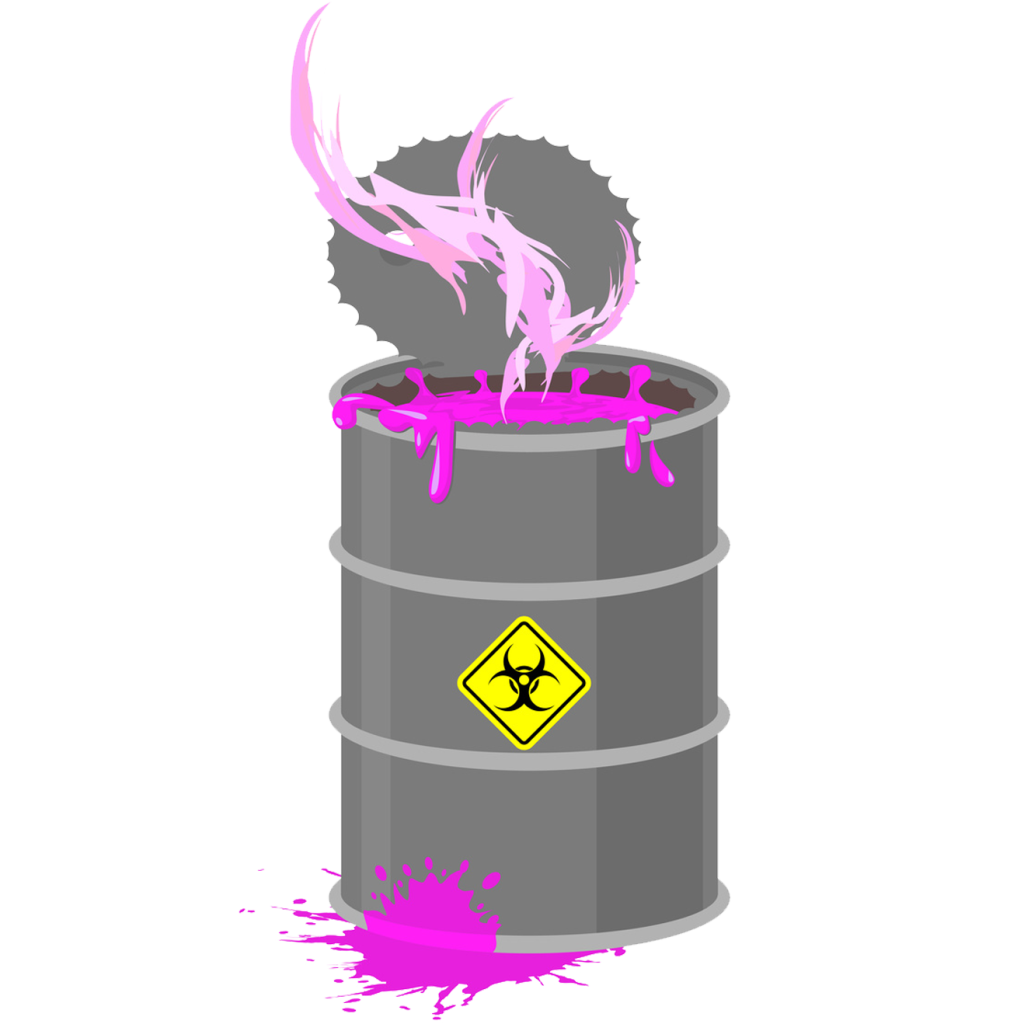Introduction
Proper disposal methods for waste containing caustic soda are of utmost importance in ensuring environmental sustainability and human safety. Caustic soda, also known as sodium hydroxide, is a highly corrosive substance commonly used in various industries, including manufacturing, chemical processing, and water treatment. Due to its hazardous nature, improper disposal of waste containing caustic soda can result in severe environmental pollution, contamination of water sources, and adverse health effects. This article aims to provide a comprehensive understanding of the importance of proper disposal methods for waste containing caustic soda, exploring its properties, potential hazards, environmental and health impacts, regulatory guidelines, best practices, and recycling opportunities. By adopting responsible waste management practices, we can minimize the negative impacts of caustic soda waste and contribute to a cleaner and safer environment.
1. Overview of Waste Containing Caustic Soda
1.1. Definition and Types of Waste Containing Caustic Soda
Waste containing caustic soda refers to any byproducts or residues that contain caustic soda, also known as sodium hydroxide. Caustic soda is a highly alkaline compound commonly used in industries such as manufacturing, paper production, and water treatment. The waste can come in various forms, including liquids, solids, or sludges.
1.2. Common Sources of Caustic Soda Waste
Caustic soda waste is generated from a range of industrial processes. It can be a byproduct of chemical reactions, such as in the production of textiles, detergents, and soaps. Other sources include wastewater treatment plants, where caustic soda is used for pH adjustment, and metal cleaning processes in industries like automotive and aerospace.

2. Understanding Caustic Soda: Properties and Potential Hazards
2.1. Chemical Composition and Characteristics of Caustic Soda
Caustic soda, or sodium hydroxide (NaOH), is a white, crystalline solid that is highly soluble in water. It is an extremely strong base with a pH of 14, which means it has the ability to neutralize acids. Caustic soda is corrosive and can cause severe burns upon contact with the skin or eyes.
2.2. Potential Hazards and Risks Associated with Caustic Soda Waste
The improper handling and disposal of caustic soda waste can pose significant hazards. Accidental spills or releases can contaminate soil and water systems, leading to environmental damage. Direct exposure to caustic soda waste can cause chemical burns, eye damage, and respiratory issues. It is important to handle and dispose of caustic soda waste with caution to minimize these risks.

3. Environmental and Health Impacts of Improper Disposal
3.1. Adverse Effects on Soil and Water Systems
Improper disposal of caustic soda waste can have detrimental impacts on soil and water systems. The high alkalinity of caustic soda can alter the pH balance of soil, making it unsuitable for plant growth and disrupting the natural ecosystem. When caustic soda waste enters water bodies, it can harm aquatic life and contaminate drinking water sources.
3.2. Impact on Human Health and Safety
Improper handling or accidental exposure to caustic soda waste poses health risks to humans. Direct contact with the skin or eyes can result in severe burns and tissue damage. Inhalation of caustic soda fumes or mists can irritate the respiratory system. Long-term exposure may lead to chronic health issues. It is crucial to prioritize safety and employ proper disposal methods to protect both human health and safety.
4. Regulatory Guidelines and Best Practices for Disposal
4.1. Overview of Relevant Regulations and Legislation
Various regulations and legislation exist to govern the disposal of caustic soda waste. These include guidelines set forth by environmental protection agencies, health and safety organizations, and local authorities. It is essential to understand and comply with these regulations to ensure responsible and lawful disposal of caustic soda waste.
4.2. Best Practices for Handling and Disposing of Caustic Soda Waste
To properly handle and dispose of caustic soda waste, several best practices should be followed. These include using appropriate personal protective equipment, such as gloves and goggles, when working with caustic soda. It is important to store and transport the waste in suitable containers to prevent leaks or spills. Disposal methods should adhere to local regulations, which may include neutralization or treatment processes. Consulting with waste management professionals can provide further guidance on the specific disposal requirements for caustic soda waste.
Remember, by understanding the properties, hazards, and proper disposal methods of caustic soda waste, we can protect the environment, safeguard human health, and promote a safer and cleaner future for all.
5. Proper Disposal Methods for Waste Containing Caustic Soda
5.1. Neutralization and pH Adjustment Techniques
When it comes to disposing of waste containing caustic soda, neutralization and pH adjustment techniques play a crucial role. These methods involve adding substances to the waste to bring the pH level to a safe range. By neutralizing the caustic soda, you can make it less harmful and reduce the potential risks associated with its disposal.
5.2. Secure Containers and Labeling Requirements
To ensure the safe disposal of waste containing caustic soda, it is essential to use secure containers and follow proper labeling requirements. Secure containers prevent leaks and spills that can have detrimental effects on the environment and human health. Additionally, labeling the containers correctly provides crucial information about the contents, allowing for easy identification and handling.
5.3. Safe Transport and Storage Protocols
Transporting and storing waste containing caustic soda should be done following specific protocols to avoid accidents and contamination. This includes using appropriate containers that can withstand the corrosive nature of caustic soda and securing them properly during transportation. Proper storage techniques, such as keeping the containers in a designated area away from incompatible materials, also contribute to maintaining safety standards.
6. Recycling and Reusing Caustic Soda Waste
6.1. Opportunities for Recycling and Reclaiming Caustic Soda
Instead of solely focusing on disposal, exploring opportunities for recycling and reclaiming caustic soda waste can be incredibly beneficial. Caustic soda can often be recovered and reused in various industrial processes, reducing the need for new production and minimizing waste generation. This not only helps in conservation efforts but also saves costs for businesses.
6.2. Benefits and Challenges of Reusing Caustic Soda Waste
Reusing caustic soda waste comes with its fair share of benefits and challenges. On the positive side, it promotes sustainability by reducing the demand for virgin caustic soda and conserving resources. However, challenges such as proper purification and maintenance of quality standards need to be addressed. Additionally, legal and regulatory requirements also play a role in determining the feasibility of reusing caustic soda waste.
7. Case Studies: Successful Disposal and Recycling Initiatives
7.1. Real-world Examples of Effective Caustic Soda Waste Management
In this section, we delve into real-world examples of companies and organizations that have implemented effective caustic soda waste management strategies. These case studies highlight the importance of responsible disposal and recycling practices, showcasing successful initiatives that have minimized environmental impact and improved overall waste management.
7.2. Lessons Learned from Successful Case Studies
By examining the lessons learned from successful case studies, we gain valuable insights into best practices for caustic soda waste management. These lessons provide practical guidance and demonstrate the positive outcomes that can be achieved through responsible waste disposal and recycling efforts. Whether it’s implementing efficient neutralization techniques or establishing strong collaboration between stakeholders, these case studies offer valuable lessons for all.
8. The Importance of Responsible Waste Management for Caustic Soda
In conclusion, understanding the importance of proper disposal methods for waste containing caustic soda is crucial for both environmental stewardship and human safety. By adhering to neutralization and pH adjustment techniques, using secure containers and following labeling requirements, and implementing safe transport and storage protocols, we can minimize the risks associated with caustic soda waste. Additionally, exploring recycling and reusing opportunities brings further benefits and contributes to sustainable practices. Through examining successful case studies and learning from their experiences, we can continue to improve and prioritize responsible waste management for caustic soda in various industries.
8. Conclusion
In conclusion, the proper disposal of waste containing caustic soda is crucial for environmental preservation and safeguarding human health. Understanding the properties and potential hazards of caustic soda waste allows us to implement effective disposal methods that minimize environmental pollution and prevent harm to ecosystems. By adhering to regulatory guidelines and best practices, we can ensure the safe handling, transportation, and storage of caustic soda waste. Additionally, exploring recycling and reusing opportunities can further reduce the negative impact on the environment. It is our collective responsibility to adopt responsible waste management practices and contribute to a sustainable future by prioritizing the proper disposal of waste containing caustic soda.










